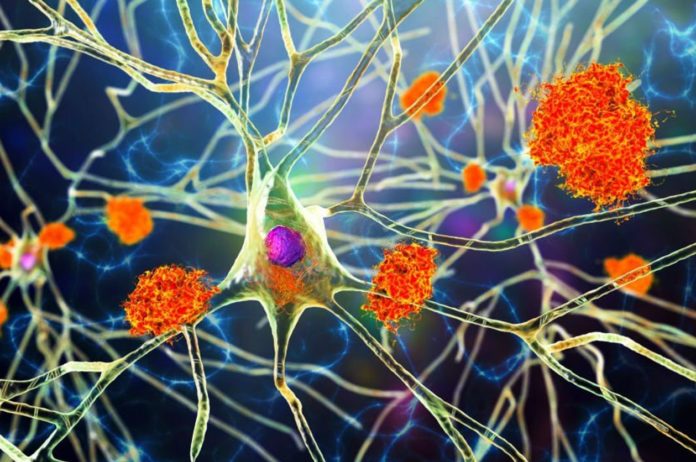It’s commonly believed that a little stress is beneficial to your health. Now, scientists have uncovered a novel method that could help avoid the formation of protein tangles, which are typical in dementia.
Misfolded proteins accumulate in the brains of people with neurodegenerative disorders including Alzheimer’s and Parkinson’s. Amyloid and tau in Alzheimer’s disease form “aggregates” of these proteins, which can cause irreparable damage to brain cells.
Protein folding is a natural bodily activity, and in healthy people, cells perform quality control to ensure that proteins are folded appropriately and that misfolded proteins are eliminated. This system, however, is compromised in neurodegenerative illnesses, with potentially fatal effects.
As the world’s population ages, more people are being diagnosed with dementia, making the quest for effective treatments even more important. However, progress has been gradual, with no treatments currently available to prevent or eliminate aggregate build-up.
In a study published today in Nature Communications, a team led by scientists from the UK Dementia Research Institute at the University of Cambridge have uncovered a new mechanism that appears to reverse the accumulation of aggregates by ‘refolding’ them, as opposed to destroying them entirely.
“Just like when we get stressed by a heavy workload, so, too, cells can get ‘stressed’ if they’re called upon to produce a large amount of proteins,” explains Dr. Edward Avezov.
“There are many reasons why this might be, for example when they are producing antibodies in response to an infection. We focused on stressing a component of cells known as the endoplasmic reticulum, which is responsible for producing around a third of our proteins — and assumed that this stress might cause misfolding.”
In mammalian cells, the endoplasmic reticulum (ER) is a membrane structure. It performs a variety of critical tasks, including protein synthesis, folding, modification, and transport on the cell surface and outside the cell. Stressing the ER, according to Dr. Avezov and colleagues, may cause protein misfolding and aggregation by reducing its ability to function properly, resulting in higher aggregation.
They were taken aback when they discovered the contrary was true.
“We were astonished to find that stressing the cell actually eliminated the aggregates — not by degrading them or clearing them out, but by unravelling the aggregates, potentially allowing them to refold correctly,” says Dr. Avezov.
“If we can find a way of awakening this mechanism without stressing the cells — which could cause more damage than good — then we might be able to find a way of treating some dementias.”
The key component of this mechanism appears to be a heat shock protein (HSP), which are produced in greater numbers when cells are exposed to temperatures higher than their usual development temperature and in reaction to stress.
Dr. Avezov believes that this could explain one of the more odd findings in dementia research.
“There have been some studies recently of people in Scandinavian countries who regularly use saunas, suggesting that they may be at lower risk of developing dementia. One possible explanation for this is that this mild stress triggers a higher activity of HSPs, helping correct tangled proteins.”
The difficulty to visualize these processes in living cells has been one of the problems that has previously hampered this field of research. The team devised a technology that allows them to detect protein misfolding in live cells in collaboration with scientists from Pennsylvania State University and the University of Algarve. It works by monitoring the light patterns of a blazing chemical on a nanosecond scale (one billionth of a second).
“It’s fascinating how measuring our probe’s fluorescence lifetime on the nanoseconds scale under a laser-powered microscope makes the otherwise invisible aggregates inside the cell obvious,” adds Professor Eduardo Melo, one of the leading authors.
Image Credit: Getty
You were reading: Finally, We Know How to Eliminate Build-up of Toxic Proteins in Dementia
